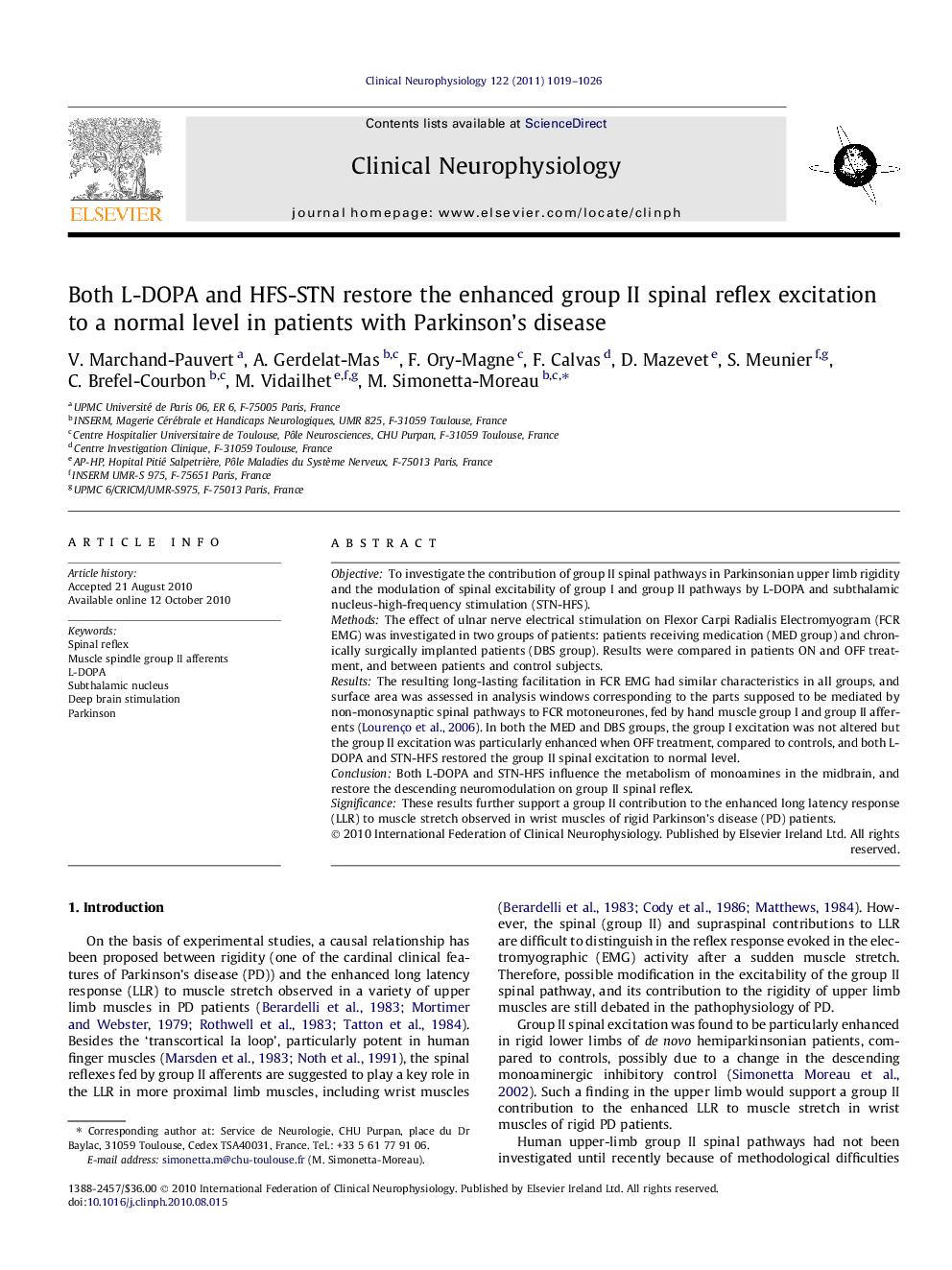| Article ID | Journal | Published Year | Pages | File Type |
|---|---|---|---|---|
| 3044482 | Clinical Neurophysiology | 2011 | 8 Pages |
ObjectiveTo investigate the contribution of group II spinal pathways in Parkinsonian upper limb rigidity and the modulation of spinal excitability of group I and group II pathways by L-DOPA and subthalamic nucleus-high-frequency stimulation (STN-HFS).MethodsThe effect of ulnar nerve electrical stimulation on Flexor Carpi Radialis Electromyogram (FCR EMG) was investigated in two groups of patients: patients receiving medication (MED group) and chronically surgically implanted patients (DBS group). Results were compared in patients ON and OFF treatment, and between patients and control subjects.ResultsThe resulting long-lasting facilitation in FCR EMG had similar characteristics in all groups, and surface area was assessed in analysis windows corresponding to the parts supposed to be mediated by non-monosynaptic spinal pathways to FCR motoneurones, fed by hand muscle group I and group II afferents (Lourenço et al., 2006). In both the MED and DBS groups, the group I excitation was not altered but the group II excitation was particularly enhanced when OFF treatment, compared to controls, and both L-DOPA and STN-HFS restored the group II spinal excitation to normal level.ConclusionBoth L-DOPA and STN-HFS influence the metabolism of monoamines in the midbrain, and restore the descending neuromodulation on group II spinal reflex.SignificanceThese results further support a group II contribution to the enhanced long latency response (LLR) to muscle stretch observed in wrist muscles of rigid Parkinson’s disease (PD) patients.
